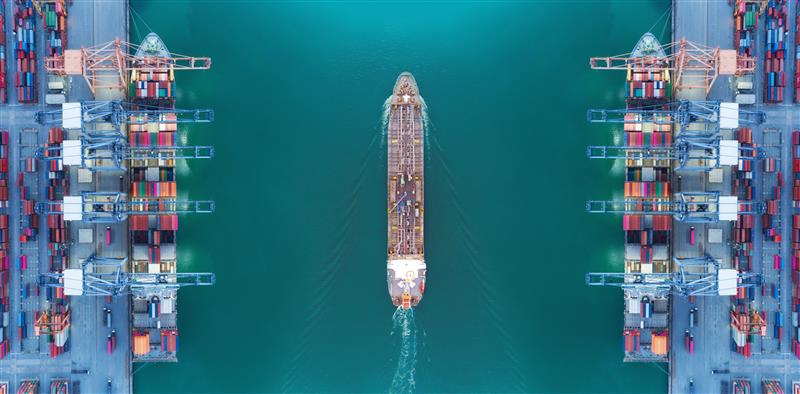Structuring for Success: How Exporters Can Align Their Trade Terms with Receivables Finance

As working capital becomes more critical to cross-border trade, exporters around the world—whether shipping food ingredients from Indonesia, garments from Bangladesh, or auto parts from Vietnam—are increasingly turning to receivables finance to bridge long payment cycles.
However, one of the most common challenges exporters face is understanding which export structures actually work best for receivables finance under open account terms.
At Convergence, we regularly support clients and trade associations in emerging markets, and we’ve seen a common disconnect: suppliers want to reduce payment risk, while buyers want flexibility and minimal upfront commitment. The key is finding a structure that strikes the right balance—enabling financing while protecting the interests of both parties.
Understanding the Misalignment
Here’s the typical scenario:
- Suppliers, especially SMEs or mid-sized exporters, want assurance they’ll be paid. As a result, many request Letters of Credit (LCs) or Documentary Collections. While these tools offer payment security, they also delay cash flow, incur high fees, and consume buyers’ available credit lines with their banks—making them less attractive.
- Buyers, particularly those in developed markets, often prefer DDP (Delivered Duty Paid) or DAP (Delivered at Place) terms. These structures delay their obligation to pay or even take title until goods arrive at their own warehouse. While this reduces buyer risk, it significantly delays the financing trigger for the supplier.
For receivables finance to work—especially cross-border finance where Convergence takes on insolvency risk of the overseas buyer—we typically need title to pass to the buyer before we advance funds. Structures where title transfer is delayed (like DDP) push the financing trigger too far down the timeline, increasing risk and reducing viability.
Preferred Export Structures for Receivables Finance
Several Incoterms offer the right balance of control and clarity—making them ideal for financing:
- FOB (Free on Board)
- Title & risk transfer: At the port of loading (after goods cross the ship’s rail).
- Finance trigger: Upon receipt of a clean Bill of Lading showing shipment on board.
- Why it works: We can advance funds once shipment is confirmed and title has passed. Buyers typically accept this because they still control freight and insurance.
- FCA (Free Carrier)
- Title transfer: When the goods are handed over to the carrier at a designated location.
- Flexibility: Works well in containerized trade or with inland transport to the port.
- Bonus: Allows exporters to use multimodal logistics while maintaining clear transfer points for financing.
- CFR (Cost and Freight) / CIF (Cost, Insurance and Freight)
- Title still passes at the port of loading, but the seller covers transportation and optionally insurance.
- Practical for buyers who want logistics costs bundled into the invoice but do not need to wait for goods to arrive before taking ownership.
Commonly Misaligned Structures: DDP & DAP
- DDP (Delivered Duty Paid) requires the seller to cover duties, customs clearance, and delivery to the buyer’s location. Title typically passes at the buyer’s premises.
- DAP (Delivered at Place) has similar issues—risk and title transfer occur too late for financing to work well.
- Problem: These terms delay the finance trigger, creating long gaps between production, shipment, and cash receipt.
From LC to Receivables Finance: Making the Transition
If you’re an exporter used to working under LCs, receivables finance might seem risky—but with the right structuring, we can offer equivalent comfort:
- Credit checks and ongoing buyer monitoring are done via our fintech platform.
- Payment is advanced once shipping documents (e.g., BL, invoice, packing list) are verified—often faster than LC settlements.
- Optional credit insurance can be embedded to further de-risk transactions.
- Dilution protections (e.g., partial advance rates) allow for minor disputes or claims without full risk to the funder or exporter.
This enables you to reduce reliance on LCs, get paid faster, and offer more attractive terms to your buyers—without compromising security.
Making DDP or DAP More Financeable
If your buyer insists on taking ownership only upon final delivery, we offer several tools to make receivables finance viable:
- Quality inspection services: We can arrange for third-party inspection and certification at the point of loading or FCA handover.
- Digital documentation: All shipment and inspection data is uploaded to our platform in real-time to confirm condition and quantity.
- Advance structure: We may finance a partial advance at shipment and disburse the balance upon buyer acknowledgment or delivery confirmation—mitigating timing gaps while maintaining control.
These tools allow buyers to maintain their preferred terms, while giving you earlier access to capital.
Final Thoughts: Structuring for Growth
The right export structure can mean the difference between slow, risky payments—or fast, flexible finance that grows your business.
At Convergence, we specialize in working with exporters, manufacturers, and sourcing agents across Asia, Africa, and beyond to design practical financing solutions. Whether you’re selling under FOB, exploring open account alternatives to LCs, or trying to negotiate with buyers who prefer DDP, we’re here to help structure a solution that works.
Interested in optimizing your payment terms and improving your cash flow?
Contact us to learn how receivables finance can be structured to fit your trade.
Previous Post Next Post




